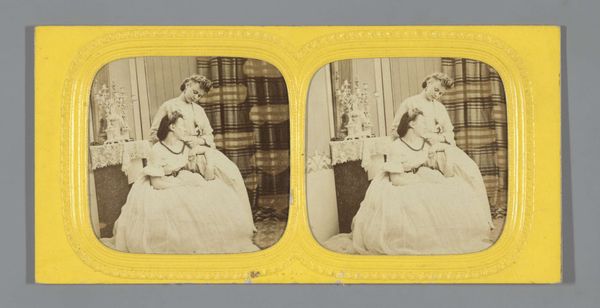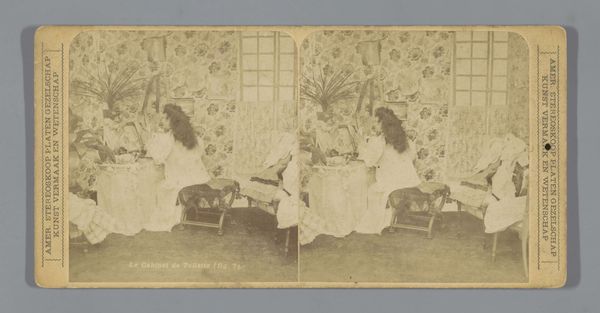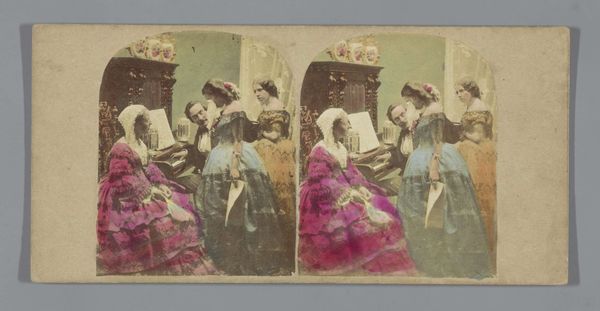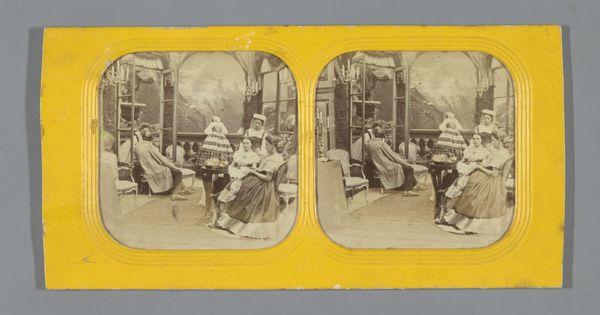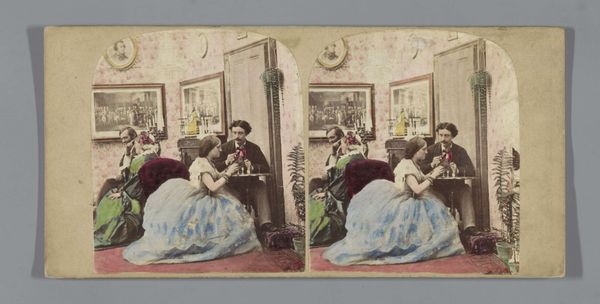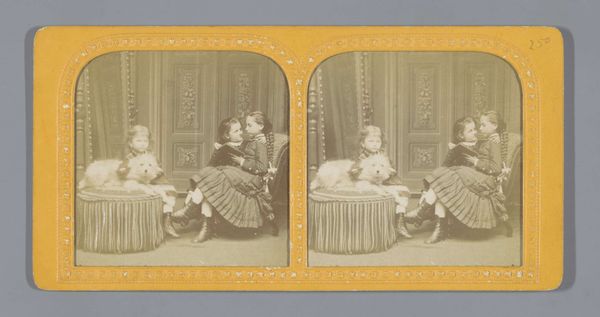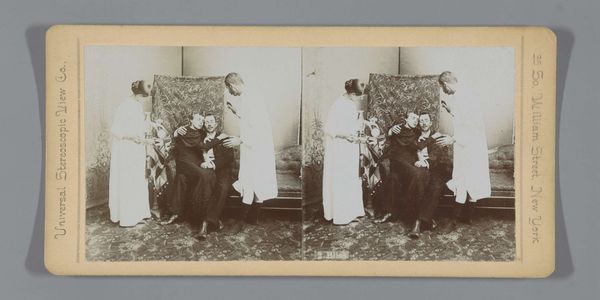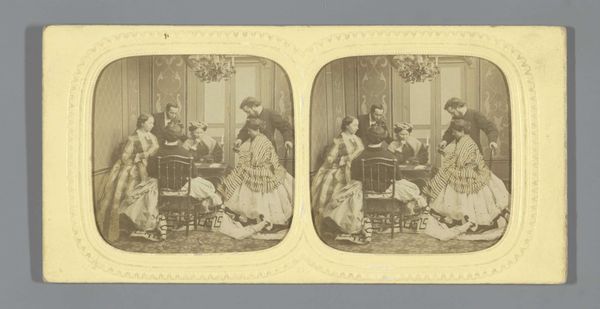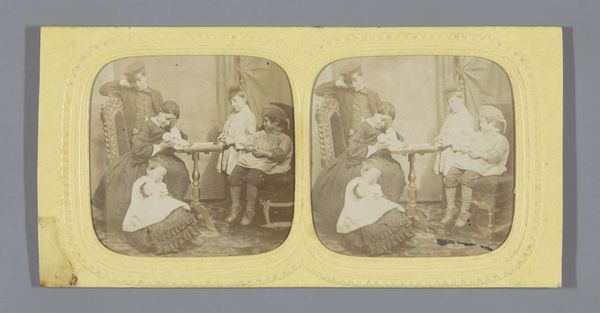
Dimensions: height 85 mm, width 175 mm
Copyright: Rijks Museum: Open Domain
Curator: Here we have "Tafereel in een theater: drie vrouwen en twee mannen in een loge," a daguerreotype believed to be created between 1850 and 1864. The photograph depicts five individuals posed in what appears to be a theater box. Editor: It has a somewhat stilted feel, doesn't it? The formal arrangement—almost symmetrical—emphasizes their social distance despite their proximity. The subdued palette certainly adds to that solemn atmosphere. Curator: Indeed. Considering its medium, this "living picture," as photography was often called, required considerable technical skill. Notice how the daguerreotype process, relying on the careful manipulation of silver-plated copper, allows for such exquisite detail in capturing their attire. Their fashionable dresses, ornate fans—all indicative of the mid-19th century bourgeoisie’s desire to capture their likeness through this new technology. Editor: I am drawn to how the details contrast with the softness. The crisp edges of the dresses and theater box meet the blurred, somewhat haunting faces. This tonal imbalance enhances the composition—but leaves the photograph feeling slightly unresolved. Curator: This ambiguity is a potent aspect of early photography, which existed within debates around art and mechanical reproduction. A photograph like this speaks volumes about the emerging culture of display. The presence of theater glasses reminds us that they are not simply witnessing a play; they are putting on a performance themselves, constructing a desired public image. The final print was then disseminated as a product that circulated as an exclusive commodity amongst the upper-classes. Editor: Quite a telling study of bourgeois representation! Thinking of its inherent flatness, how the foreground merges with the background: it almost eliminates a spatial feeling in what should be a "real space." The two figures looking through glasses break the horizontality of the overall photograph, drawing the eye. Curator: Fascinating. Considering this particular social milieu, there are questions regarding why someone wanted this image made. Was it for family connections or maybe marital prospects? Early photography offered a democratization of portraiture that only Royalty and aristocrats could afford centuries before, Editor: I concur that viewing it from this perspective deepens its significance. A simple snapshot it isn't. Curator: Exactly, I think that concludes my thoughts. Editor: Yes, I would have to agree.
Comments
No comments
Be the first to comment and join the conversation on the ultimate creative platform.


